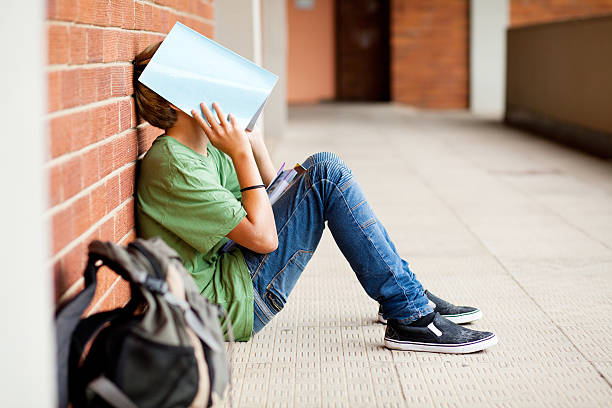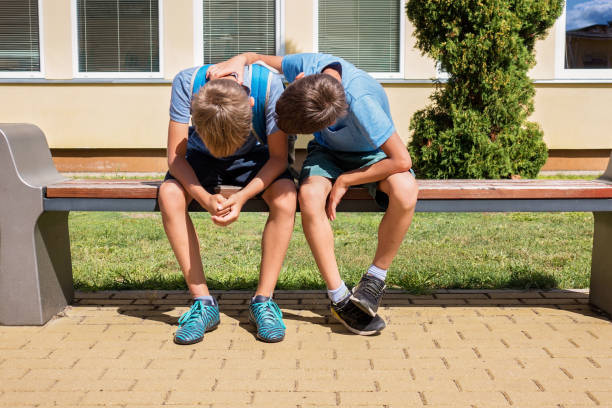
Help your child overcome school anxiety with these practical tips for kids and parents. Learn coping strategies, communication techniques, and when to seek professional support.
Understanding School Anxiety
School anxiety is more than just first-day jitters—it’s a persistent worry that can make mornings stressful, homework overwhelming, and even lead to physical symptoms like stomachaches or headaches. Whether it’s fear of tests, social pressures, or separation from parents, school anxiety affects many children (and their families).
The good news? With the right strategies, kids can learn to manage their worries and thrive in school. Here’s how parents and children can work together to turn anxiety into confidence.

Signs of School Anxiety in Kids
Every child expresses anxiety differently, but common signs include:
- Physical complaints (stomachaches, headaches, nausea)
- Avoidance (refusing to go to school, frequent visits to the nurse)
- Emotional outbursts (tantrums, crying, clinginess)
- Sleep troubles (difficulty falling or staying asleep)
- Academic struggles (drop in grades, perfectionism, procrastination)
If these behaviors last more than a few weeks, it may be time to address the root cause.

Tips for Kids: Coping with School Anxiety
1. Name the Feeling
Anxiety can feel like a big, scary monster—but naming it helps shrink it down. Teach your child to say:
- “I feel nervous about my math test.”
- “I’m worried no one will sit with me at lunch.”
2. Practice Deep Breathing
Simple breathing exercises can calm the nervous system. Try:
- 5-5-5 Breathing: Inhale for 5 seconds, hold for 5, exhale for 5.
- Bubble Breathing: Pretend to blow bubbles slowly.
3. Create a “Worry Time”
Set aside 5-10 minutes daily for your child to write or talk about their worries. This contains anxiety instead of letting it take over the day.
4. Break Tasks into Small Steps
Big assignments or social situations feel less scary when broken down:
- Instead of: “I have to give a presentation.”
- Try: “Today, I’ll practice one slide with Mom.”
5. Use a Comfort Object
A small token (a worry stone, family photo, or lucky pencil case) can provide reassurance.

Tips for Parents: How to Help
1. Listen Without Judgment
Instead of: “Don’t worry—it’s not a big deal!”
Try: “I hear you. School feels tough right now. What’s the hardest part?”
2. Establish a Calm Morning Routine
- Prep backpacks/lunches the night before.
- Play relaxing music during breakfast.
- Leave extra time to avoid rushing.
3. Partner with Teachers
Ask the teacher:
- Is my child participating?
- Are there specific triggers (group work, transitions)?
- Can we create a signal for when they need a break?
4. Reward Brave Behavior
Celebrate small wins:
- “You walked into class without crying—let’s get ice cream!”
- Sticker charts work well for younger kids.
5. Model Healthy Coping
Kids mimic parents. Show them how you handle stress:
- “I’m feeling overwhelmed, so I’m going to take deep breaths.”
- “I made a mistake at work today, but it’s okay—I’ll try again.”
When to Seek Professional Help
While some anxiety is normal, consider professional support if your child:
🚩 Misses school frequently due to anxiety.
🚩 Has panic attacks or extreme meltdowns.
🚩 Shows signs of depression (withdrawal, loss of interest in activities).
Therapists can teach:
- Cognitive Behavioral Therapy (CBT) to reframe negative thoughts.
- Exposure therapy to gradually face fears.
- Relaxation techniques tailored to your child.
Final Thoughts
School anxiety doesn’t have to control your child’s life. With patience, empathy, and the right tools, they can build resilience and confidence. Start small, celebrate progress, and remember: you’re not alone in this journey.
📌 Call to Action: If anxiety is impacting your child’s daily life, reach out to a school counselor or child psychologist for personalized support.
Additional Resources:
- Child Mind Institute: School Anxiety
- Anxiety and Depression Association of America
- [Books for Kids:** “Wilma Jean the Worry Machine” (Julia Cook)
For Parents: “Freeing Your Child from Anxiety” (Tamar Chansky)
By working together, we can help kids face school with courage—not fear. 💙
Leave a Reply